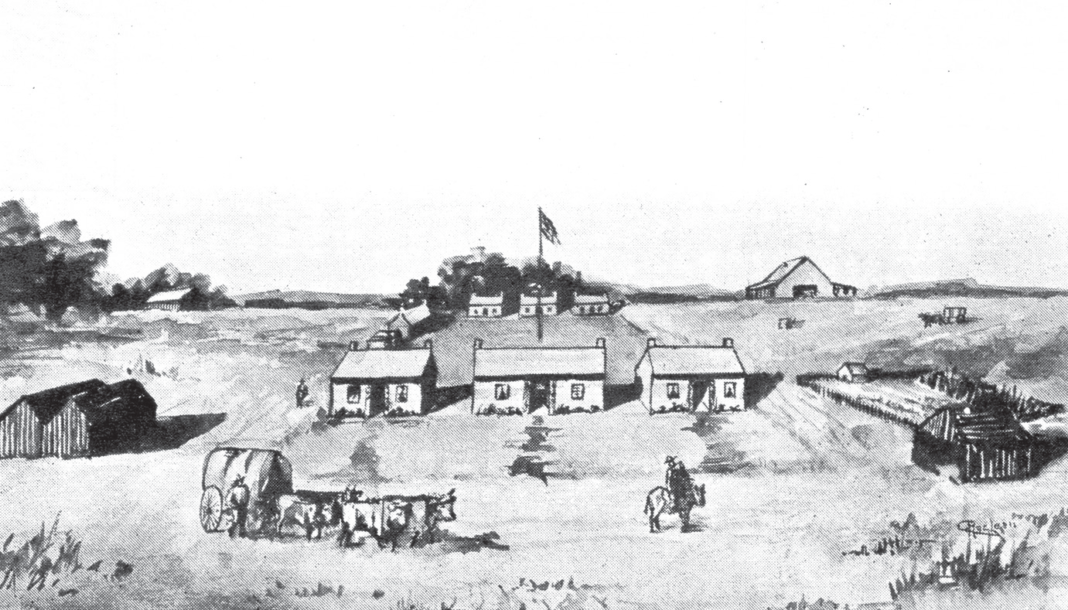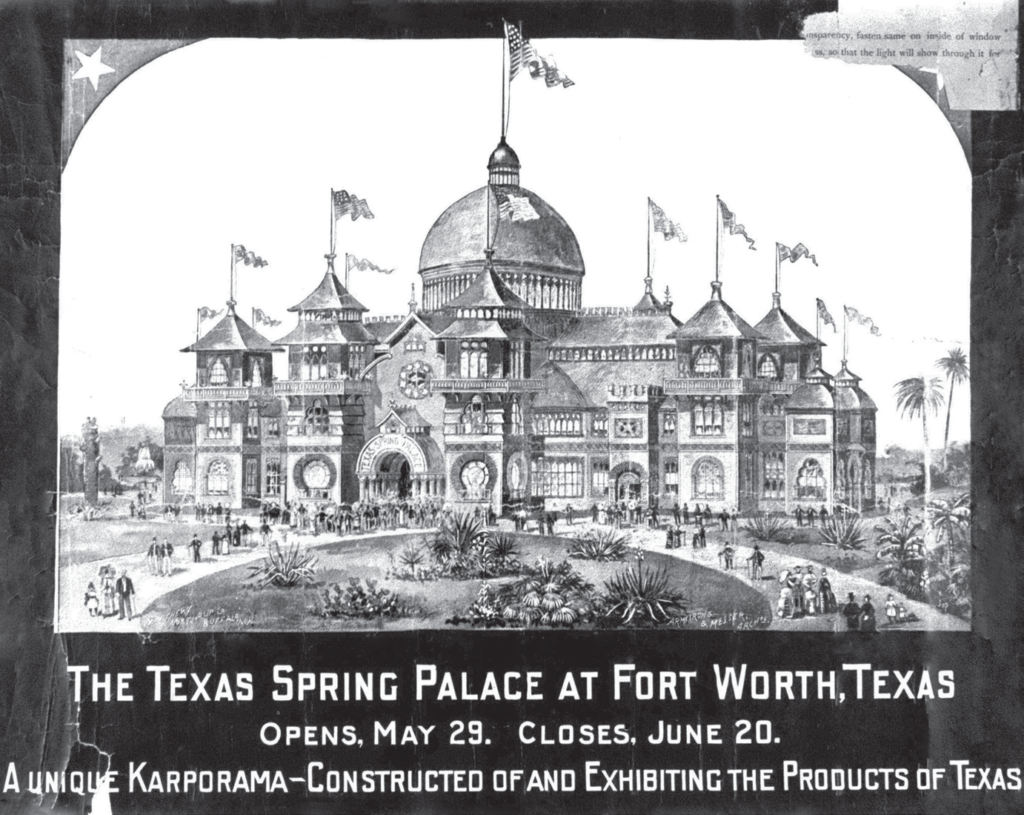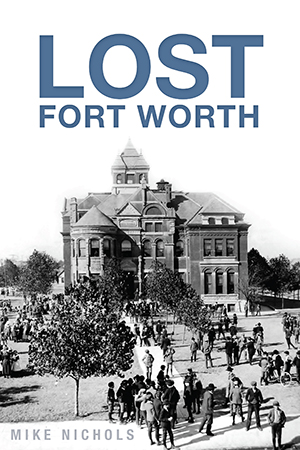
Eventually known as “Where the West Begins,” Fort Worth returns time and again to the main stage of Texas yore. True crime, Texas Rangers and Indians, celebrated food, even world-famous architecture are found in Fort Worth history. While everyone knows about the Kimbell Art Museum and the famous Stockyards, they may wonder what landmarks and institutions preceded the city’s current attractions. Here are a few of Fort Worth’s sites and tales lost to time.
Thanks to Mike Nichols, author of Lost Fort Worth and the amazing DFW-based blog Hometown by Handlebar, for these great glimpses of Fort Worth past.
The Fort
In June 1849, looking for a site on which to establish Fort Worth, U.S. Army major Ripley Arnold and Texas Ranger colonel Middleton Tate Johnson explored the confluence of the Clear and West Forks of the Trinity River. They settled on a bluff above the river which provided three advantages: water supply, timber, and a strategic view to monitor Indian activity.
By 1853, as colonizers settled around the fort, the frontier began to shift to the west. More forts were needed on the new frontier, and the army abandoned Fort Worth. The civilian population thrived after the military moved on. Fort Worth was a bona fide town.
St. Elmo Hotel: The second stomping ground of notorious serial killer H.H. Holmes
Ever hear about America’s first serial killer? In 1892, Dr. Henry Howard Holmes built a hotel in Chicago near the World’s Fair of 1893. Actually, the hotel was a labyrinthine “murder castle” of sixty rooms, where the doctor was suspected of killing as many as twenty-seven.
In 1893, Holmes began a romantic relationship with Minnie Williams of Fort Worth. Minnie and her sister had an inheritance of land on Commerce Street in downtown Fort Worth. Holmes planned another hotel for the booming frontier town — this one was adjacent to the opera house, one block from the Natatorium, livery stables, theaters and restaurants.

At some point, both Williams sisters disappeared, but Holmes, the inveterate crook, was eventually nabbed for horse thieving. Following his arrest, Holmes confessed to killing two people, and was found guilty of only one. After Holmes was hanged, ownership of his Fort Worth hotel was tied up in court. By 1900, the “castle” was the LaClede Hotel, then the St. Elmo Hotel, and in 1925, the Holmes building housed assorted businesses. In 1952, it was torn down and replaced by a parking lot. Who knows what the infamous Holmes had in mind for Fort Worth…?
Spring Palace Exhibition

In the late 19th century, Fort Worth had an image problem. The western frontier town had been made famous worldwide as “Cowtown.” City leaders planned the Texas Spring Palace exhibition, and invited each county in the state to display its natural resources, art, crops and products in the massive structure. Think World’s Fair. Built in just thirty-one days—between Main and Jennings Streets on landfill of the Texas & Pacific Railroad.
The sprawling wooden building was an exciting melange of Victorian and Asian styles, with arches, columns, balconies, cupolas, round portals, square pagoda-like bays and flags atop spires. Topping it off was a large Moorish dome that rivaled the Capitol in Washington, D.C.
The Texas Spring Palace exhibition opened on May 29, 1889, and was deemed a success in its opening season. At the end of its second season, a fire swept through the wood structure, and the palace burned to the ground in fifteen minutes, with only one fatality. A fountain honoring the victim is located near the site of the Texas Spring Palace.
Want to learn more?
This article was adapted from Lost Fort Worth by Mike Nichols. Get your copy from our bookstore at Arcadia Publishing.

“Mike doesn’t just write history, he tells the story of days gone by in an interesting and delightful way. It’s all there, the good, the bad and the ugly. If you think history is a dull and boring, just read this book about my hometown.” – Reader Review

